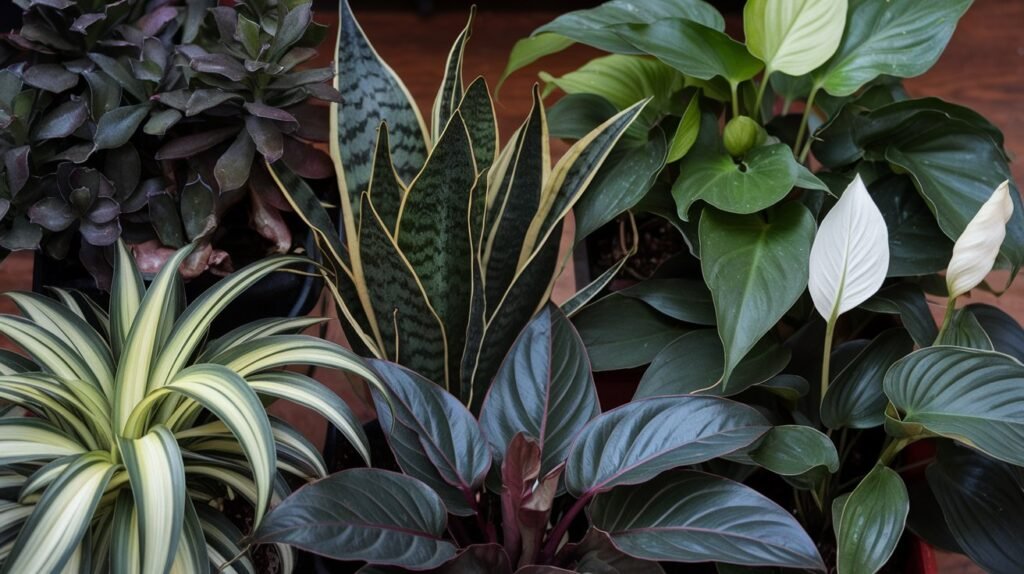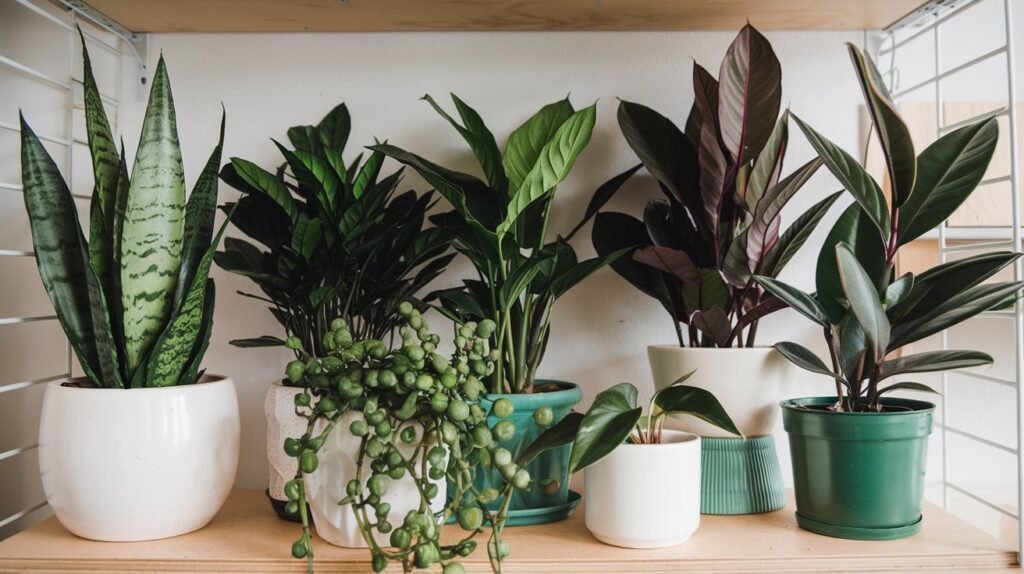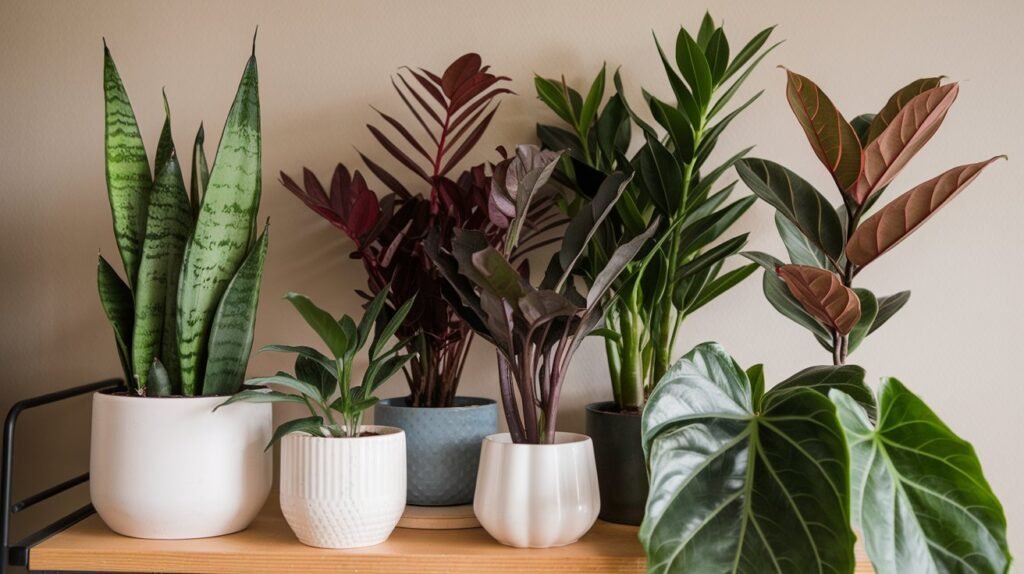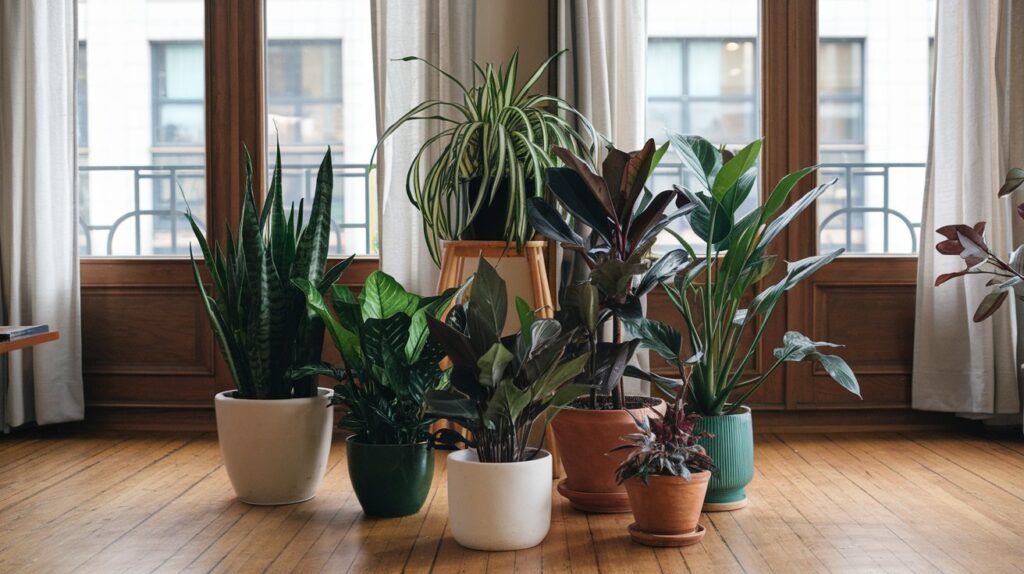Living in an apartment often means limited sunlight, but that doesn’t mean you can’t enjoy the beauty and benefits of indoor plants. Low-light plants are the perfect solution for small spaces with minimal natural light. These hardy plants thrive in indirect sunlight or dimly lit areas, making them ideal for busy apartment dwellers or anyone new to gardening.
This guide will introduce you to the top 7 low-light plants perfect for apartments, along with care tips and how to incorporate them into your space.

Why Choose Low-Light Plants for Apartments?
Low-light plants are a great choice for apartment living for several reasons:
- Adaptability: They can thrive in dim corners, near shaded windows, or even in rooms with artificial light.
- Low Maintenance: These plants require minimal attention, making them ideal for busy lifestyles.
- Air Purification: Many low-light plants naturally filter toxins from the air, improving indoor air quality.
- Aesthetic Appeal: They add a touch of greenery, creating a calm and inviting atmosphere in your home.
1. Snake Plant (Sansevieria)

Also known as the “Mother-in-Law’s Tongue,” the snake plant is one of the most popular low-light plants for good reason.
Why It’s Perfect:
- Thrives in dim light or artificial lighting.
- Tolerates irregular watering and neglect.
- Known for its air-purifying qualities, removing toxins like formaldehyde and benzene.
Care Tips:
- Water sparingly, allowing the soil to dry out completely between waterings.
- Place it in any corner with low to moderate light levels.
2. Pothos (Epipremnum aureum)
The pothos, often called the “Devil’s Ivy,” is a versatile and virtually indestructible plant that grows well in low light.
Why It’s Perfect:
- Its trailing vines can be styled in hanging baskets, on shelves, or climbing trellises.
- Grows quickly even in minimal light conditions.
- Helps remove indoor air pollutants.
Care Tips:
- Water when the top inch of soil feels dry.
- Rotate occasionally to encourage even growth.
Related Post: Vertical Gardening Ideas for City Living for tips on how to use pothos in vertical displays.
3. ZZ Plant (Zamioculcas zamiifolia)
The ZZ plant is a beginner-friendly option with shiny, dark green leaves that add a touch of elegance to any room.
Why It’s Perfect:
- Can survive in low-light conditions and dry soil for extended periods.
- Extremely resilient to neglect, making it great for new plant parents.
- Adds a sleek, modern vibe to your apartment.
Care Tips:
- Avoid overwatering; let the soil dry out completely before watering again.
- Place it in indirect light or shaded areas.
4. Peace Lily (Spathiphyllum)

Peace lilies are known for their lush green leaves and beautiful white blooms, even in low-light settings.
Why It’s Perfect:
- Flourishes in indirect or low light.
- Produces flowers even with minimal sunlight.
- Excellent at filtering indoor air pollutants.
Care Tips:
- Keep the soil moist but not soggy.
- Mist occasionally to maintain humidity.
Pro Tip: Pair a peace lily with compact gardening tools to keep it looking its best. Check out our post on Gardening Kits for Small Spaces for ideas.
5. Cast Iron Plant (Aspidistra elatior)
The cast iron plant gets its name from its ability to withstand tough conditions, including low light and neglect.
Why It’s Perfect:
- Grows well in dimly lit rooms or even in hallways with artificial light.
- Requires minimal watering and care.
- Has broad, deep green leaves that add richness to your decor.
Care Tips:
- Water only when the soil feels dry.
- Wipe the leaves occasionally to remove dust and maintain their shine.
6. Boston Fern (Nephrolepis exaltata)
Boston ferns bring a touch of classic elegance to your apartment with their lush, arching fronds.
Why It’s Perfect:
- Thrives in indirect light and high humidity.
- Adds a soft, decorative touch to bookshelves or hanging baskets.
- Acts as a natural humidifier, improving air quality.
Care Tips:
- Mist regularly or keep it near a humidifier.
- Water when the top inch of soil feels dry, ensuring the soil remains moist but not soggy.
7. Chinese Evergreen (Aglaonema)

The Chinese evergreen is a durable plant with attractive, variegated leaves that come in shades of green, silver, and sometimes pink.
Why It’s Perfect:
- Ideal for low-light apartments or shaded corners.
- Adaptable to a variety of indoor conditions, including temperature fluctuations.
- Adds a colorful pop of greenery to your space.
Care Tips:
- Water moderately, letting the soil dry out slightly between waterings.
- Wipe leaves with a damp cloth to keep them clean and vibrant.
How to Incorporate Low-Light Plants in Small Apartments
1. Use Vertical Space:
Maximize limited floor space by using wall-mounted planters, shelves, or hanging baskets.
Related Post: Vertical Gardening Ideas for City Living provides creative ways to display your plants.
2. Combine Function and Style:
Choose decorative pots or planters that complement your apartment’s decor.
3. Group Plants Together:
Create a mini indoor garden by clustering plants with similar care needs for a lush, cohesive look.
4. Rotate Plants:
If one corner of your apartment receives occasional sunlight, rotate your plants to give them equal exposure.
Benefits of Adding Low-Light Plants to Your Apartment
- Improved Air Quality: Many low-light plants remove toxins, making your indoor environment healthier.
- Stress Reduction: Studies show that being around plants can reduce stress and improve mental well-being.
- Aesthetic Appeal: Plants bring life and vibrancy to small spaces, making them feel more inviting.
- Connection to Nature: Even in the city, plants provide a calming connection to the natural world.
Final Thoughts
Low-light plants are a fantastic way to bring greenery into your apartment without needing abundant sunlight. From the hardy snake plant to the elegant peace lily, there’s a plant for every style and level of experience.
Ready to start your apartment jungle? Check out our guide on Compact Gardening Tools for Small Spaces to make plant care even easier.
Do you have a favorite low-light plant? Share your recommendations in the comments—I’d love to hear about your green-thumb successes!







